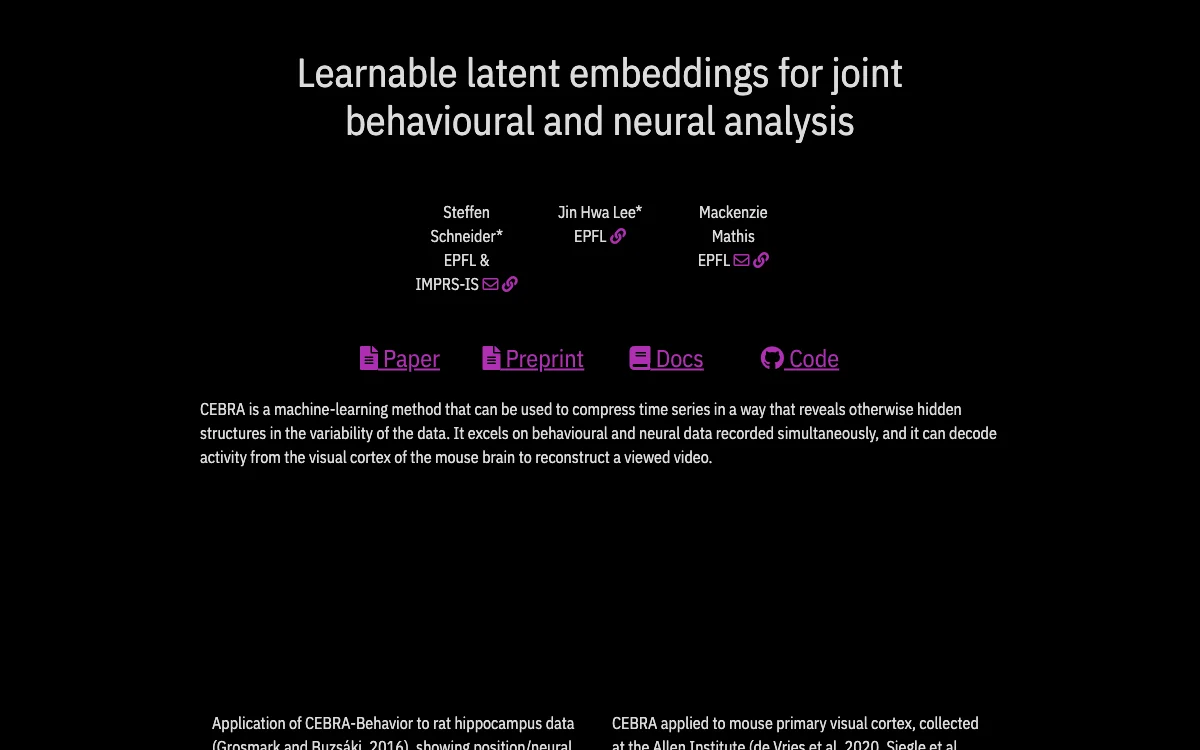CEBRA represents a groundbreaking approach in the field of neuroscience and machine learning, offering a novel method for analyzing and interpreting complex datasets. This AI-powered tool specializes in compressing time series data, thereby uncovering hidden structures within the variability of behavioral and neural data. Its application spans across various domains, from decoding activity in the visual cortex of the mouse brain to reconstructing viewed videos, showcasing its versatility and effectiveness.
One of the standout features of CEBRA is its ability to handle both behavioral and neural data simultaneously. This dual focus allows for a more comprehensive analysis, enabling researchers to map behavioral actions to neural activity with unprecedented accuracy. The method's utility is further demonstrated through its application to rat hippocampus data, where it achieves a median absolute error of just 5cm on a 160cm track, highlighting its precision and reliability.
CEBRA's methodology is not limited to specific types of neural data. It has been successfully applied to mouse primary visual cortex data, utilizing 2-photon and Neuropixels recordings. By embedding these recordings with CEBRA and using DINO frame features as labels, the tool facilitates the decoding of video frames through a kNN decoder, showcasing its adaptability and high performance across different datasets and recording techniques.
The development of CEBRA fills a significant gap in the neuroscience field by providing a non-linear technique that leverages joint behavior and neural data to uncover neural dynamics. Its ability to produce consistent and high-performance latent spaces, whether in a supervised hypothesis-driven or self-supervised discovery-driven manner, makes it an invaluable tool for researchers. The consistency of CEBRA's latent spaces serves as a metric for uncovering meaningful differences, while the inferred latents can be used for decoding, further extending its applicability.
CEBRA's versatility is evident in its validation across calcium and electrophysiology datasets, sensory and motor tasks, and simple or complex behaviors across species. It supports both single and multi-session datasets, allowing for hypothesis testing or label-free use. Moreover, CEBRA's capability to map space, uncover complex kinematic features, and provide rapid, high-accuracy decoding of natural movies from the visual cortex underscores its potential to revolutionize neuroscience research.
For those interested in exploring CEBRA further, the pre-print is available on arXiv, and the official implementation of the CEBRA algorithm can be found on GitHub. The project welcomes collaborations and encourages interested parties to reach out via email for potential partnerships. CEBRA's development is a testament to the power of AI in advancing our understanding of neural dynamics and behavioral analysis, offering a promising avenue for future research and discovery.
